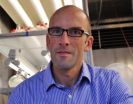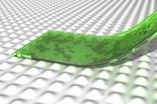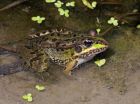(Press-News.org) This news release is available in French.
Montreal, July 9, 2014 — Whether it's how to throw a ball or put together a puzzle, young children learn a lot from their older siblings. While researchers have long known that brothers and sisters teach each other about the world, most of their observations about this have been made in a lab setting.
A new study recently published in the Journal of Cognition and Development by Concordia University education professor Nina Howe takes that investigation a step further by observing how children interact in their natural habitat: their homes.
Through the study, Howe and her colleagues from the Centre for Research in Human Development not only confirm that teaching occurs naturally and spontaneously, but that both older and younger siblings initiate learning activities. What's more, siblings acting as teachers use a variety of instructional techniques during these informal lessons.
To capture the spontaneous interactions between siblings, members of the research team spent six 90-minute sessions in the households of 39 middle-class families in Canada, each with two parents sharing caretaking responsibilities at home. The researchers observed and recorded interactions between two children, ages four and six, in each home.
The children were encouraged to play together, but not given particular instructions. Teaching moments included everything from learning to count, to learning how to rub chalk off a blackboard. Typically the older siblings would launch into a teaching moment unasked, although sometimes the younger child requested instructions.
While Howe says she anticipated observing some teaching, these occasions happened even more frequently than expected. "The extent and what would go on surprised us. While it was sometimes brief, it was sometimes quite extended," she says.
"Something else that surprised us was what was being taught," she adds. "Lab experiments often focus on how-to instruction, such as the steps in building a tower of blocks. That's what we call procedural knowledge, which older children often like to teach."
But in the natural setting, Howe and her colleagues found that younger children are even more likely to ask their older siblings questions related to conceptual knowledge; for instance, how to tell the difference between a circle and a square or how to distinguish the days of the week.
What's the take-home message for mom and dad? Let kids be kids — and don't butt in. Given the extent and frequency of these sibling-to-sibling teaching activities, Howe suggests that parents should see value in providing uninterrupted playtime between their children. "Give them the time and space to interact together, and have things in the home to promote teaching and learning, both toys and opportunities for kids to be together," she says.
Such uninterrupted time not only takes advantage of the natural sibling bond but also broadens the ways that children learn. "Sometimes people take the point of view that children only learn by being taught directly by adults, but it is evident that they are also learning from each other," says Howe.
INFORMATION:
Related links:
Concordia's Department of Education
http://crdh.concordia.ca/homee.html
Nina Howe on Explore Concordia
My brother's keeper
Concordia University study says uninterrupted playtime between siblings is key for learning
2014-07-09
ELSE PRESS RELEASES FROM THIS DATE:
What drives a child to abuse alcohol?
2014-07-09
This news release is available in French. By looking at 40 different factors in 14 year old teens, including brain structure and function, personality, life experiences and genetics, researchers can predict with 70% accuracy who will go on to develop binge drinking within the next two years. Impulsivity, hopelessness, sensation-seeking traits, lack of conscientiousness, and other variables such as life events and a family history of drug use contribute to the likelihood of binge drinking. Whether or not the child had had a single drink at age 14 was a particularly ...
One secret of ancient amber revealed
2014-07-09
The warm beauty of amber was captivating and mysterious enough to inspire myths in ancient times, and even today, some of its secrets remain locked inside the fossilized tree resin. But for the first time, scientists have now solved at least one of its puzzles that had perplexed them for decades. Their report on a key aspect of the gemstone's architecture appears in the ACS journal Analytical Chemistry.
Jennifer Poulin and Kate Helwig of the Canadian Conservation Institute point out that much of the amber we see today had its origins millions of years ago, when it exuded ...
Sunshine vitamin ups bowel cancer survival odds, study finds
2014-07-09
Bowel cancer patients with high levels of vitamin D in their blood are more likely to survive the disease, a study shows.
Patients with the highest levels of vitamin D have half the risk of dying compared with those with the lowest levels, the findings reveal.
The study is the first to correlate total blood levels of vitamin D in bowel cancer patients after their diagnosis – which includes that produced after exposure to sunlight and that obtained from dietary sources – with their long term survival prospects.
The University of Edinburgh team tested blood samples ...
Short circuit in the food web
2014-07-09
Jena (Germany) They are amongst the most numerous inhabitants of the sea: tiny haptophytes of the type Emiliania huxleyi. Not visible to the naked eye, when they are in bloom in spring, they form square kilometer sized patches, they are even visible on satellite images. "Together with other phytoplankton, Emiliania huxleyi is responsible for approximately half of the global photosynthesis output," states Prof. Dr. Georg Pohnert of the Friedrich Schiller University Jena (Germany). In the process the greenhouse gas carbon dioxide – CO2 – is extracted from the atmosphere and ...
Fit for the frontline? New study identifies the hearing requirements of British soldiers
2014-07-09
AUDIO:
The gunshot is a binaural recording using KEMAR, the weapon was an SA80 assault rifle and the microphone is 50m downrange from the firer and approximately 30cm from the bullet...
Click here for more information.
University of Southampton researchers, with assistance from the Ministry of Defence, have conducted the first study to identify the hearing requirements of British soldiers fighting on the frontline.
The study, which provides an important and novel insight into ...
Even geckos can lose their grip
2014-07-09
Not even geckos and spiders can sit upside down forever. Nanophysics makes sure of that. Mechanics researchers at Linköping University have demonstrated this in an article just published in Physical Review E. Knowledge that can be of great industrial benefit.
Geckos and spiders that seem to be able to sit still forever, and walk around upside down have fascinated researchers worldwide for many years. We will soon be able to buy smart new fasteners that hold the same way as the gecko's foot. But the fact is, sooner or later the grip is lost, no matter how little force ...
Frogs have developed rapid defences against the red swamp crayfish
2014-07-09
The common frog is one of the amphibians with the highest distribution in the Iberian Peninsula. It reproduces preferably in permanent areas of water where it comes into contact with the red swamp crayfish, which preys on its larvae. Research carried out by the Spaniard Germán Orizaola from the University of Uppsala (Sweden) confirms that the larvae of these frogs have developed a defensive response to the invasive species. They also have deeper tails and larger bodies if they co-exist with the crayfish.
Numerous invasive organisms are currently spreading outside of their ...
RUB chemists develop novel catalyst with 2 functions
2014-07-09
Chemists at the Ruhr-Universität Bochum have made a decisive step towards more cost-efficient regenerative fuel cells and rechargeable metal-air batteries. They developed a new type of catalyst on the basis of carbon, which can facilitate two opposite reactions: electrolysis of water and combustion of hydrogen with oxygen. A catalyst of this kind might make the storage of wind and solar energy and the manufacture of cost-efficient batteries, for example for electric cars, possible. The team published their report in the "International Edition" of the magazine "Angewandte ...
Rotten egg gas holds key to healthcare therapies
2014-07-09
It may smell of flatulence and have a reputation for being highly toxic, but when used in the right tiny dosage, hydrogen sulfide is now being being found to offer potential health benefits in a range of issues, from diabetes to stroke, heart attacks and dementia. A new compound (AP39), designed and made at the University of Exeter, could hold the key to future therapies, by targeting delivery of very small amounts of the substance to the right (or key) places inside cells.
Scientists in Exeter have already found that the compound protects mitochondria – the "powerhouse" ...
NIH launches Phase I clinical trial of novel drug to treat Clostridium difficile infection
2014-07-09
The National Institute of Allergy and Infectious Diseases (NIAID), part of the National Institutes of Health, has launched an early-stage clinical trial of CRS3123, an investigational oral antibiotic intended to treat Clostridium difficile (C. difficile) infection. CRS3123 (previously known as REP3123) is a narrow-spectrum agent that inhibits C. difficile growth while sparing normal intestinal bacteria.
The Phase I trial will enroll up to 30 healthy men and women ages 18 to 45 in a dose-escalation study to evaluate the investigational drug's safety and tolerability. Quintiles, ...
LAST 30 PRESS RELEASES:
A new way to map how cells choose their fate
Numbers in our sights affect how we perceive space
SIMJ announces global collaborative book project in commemoration of its 75th anniversary
Air pollution exposure and birth weight
Obstructive sleep apnea risk and mental health conditions among older adults
How talking slows eye movements behind the wheel
The Ceramic Society of Japan’s Oxoate Ceramics Research Association launches new international book project
Heart-brain connection: international study reveals the role of the vagus nerve in keeping the heart young
Researchers identify Rb1 as a predictive biomarker for a new therapeutic strategy in some breast cancers
Survey reveals ethical gaps slowing AI adoption in pediatric surgery
Stimulant ADHD medications work differently than thought
AI overestimates how smart people are, according to HSE economists
HSE researchers create genome-wide map of quadruplexes
Scientists boost cell "powerhouses" to burn more calories
Automatic label checking: The missing step in making reliable medical AI
Low daily alcohol intake linked to 50% heightened mouth cancer risk in India
American Meteorological Society announces Rick Spinrad as 2026 President-Elect
Biomass-based carbon capture spotlighted in newly released global climate webinar recording
Illuminating invisible nano pollutants: advanced bioimaging tracks the full journey of emerging nanoscale contaminants in living systems
How does age affect recovery from spinal cord injury?
Novel AI tool offers prognosis for patients with head and neck cancer
Fathers’ microplastic exposure tied to their children’s metabolic problems
Research validates laboratory model for studying high-grade serous ovarian cancer
SIR 2026 delivers transformative breakthroughs in minimally invasive medicine to improve patient care
Stem Cell Reports most downloaded papers of 2025 highlight the breadth and impact of stem cell research
Oxford-led study estimates NHS spends around 3% of its primary and secondary care budget on the health impacts of heat and cold in England
A researcher’s long quest leads to a smart composite breakthrough
Urban wild bees act as “microbial sensors” of city health.
New study finds where you live affects recovery after a hip fracture
Forecasting the impact of fully automated vehicle adoption on US road traffic injuries
[Press-News.org] My brother's keeperConcordia University study says uninterrupted playtime between siblings is key for learning



